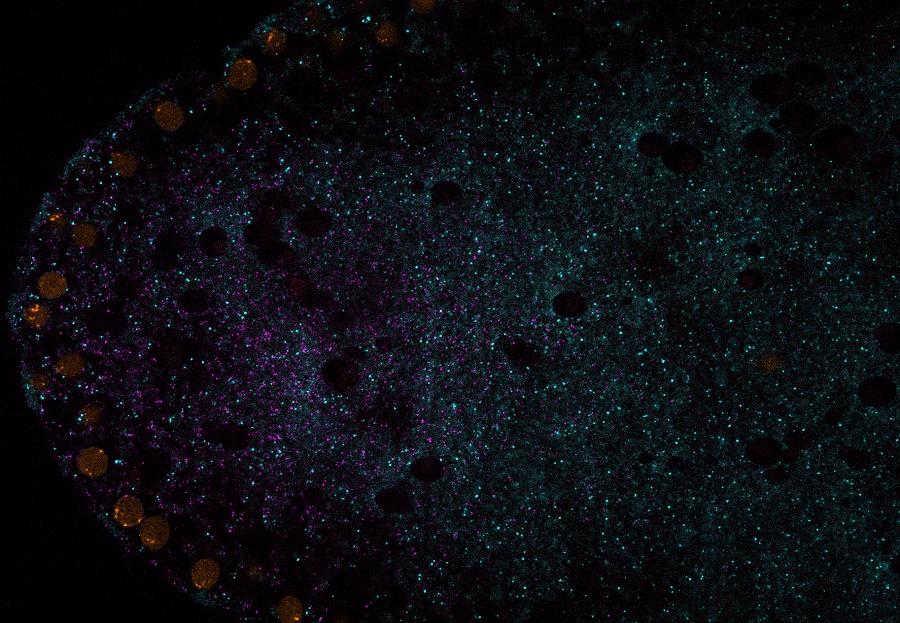
Image caption: Drosophila embryo, smFISH for bcd RNA (magenta), P bodies (cyan), nuclei (orange).
Biomolecular condensates in early development
Supervisor: Professor Tim Weil
Biomolecular condensates are non-membrane bound assemblies, typically composed of proteins and RNAs. Often termed “bodies” or “granules", these intracellular compartments function as biochemical reaction crucibles and organisational hubs. Many condensates have been shown to be essential in early animal development including: P granules in C. elegans; Balbiani bodies in Xenopus and zebrafish; and processing bodies (P bodies) in Drosophila.
We have shown that P bodies in the Drosophila egg are critical for the storage of axis-patterning mRNAs and that they are regulated by structurally distinct proteins, multivalent interactions, and cytoplasmic ion concentration. This project aims to further articulate the biological role of in vivo condensates by establishing how their assembly and disassembly is controlled.
We will use physical, chemical, and genetic tools to alter conserved condensate factors and subsequent advanced microscopy and biochemistry to assess the impact on mRNA localisation, protein expression, and condensate properties. Due to the highly conserved nature of biomolecular condensates, the results from this project will likely be applicable to many model systems and help inform work on human therapeutics and vaccines.
For more information, please visit WeilLabCambridge.com or contact Prof Tim Weil at tw419@cam.ac.uk
References
Sankaranarayanan M et al., Adaptable P body physical states differentially regulate bicoid mRNA storage during early Drosophila development. Dev Cell. 2021; 56(20).
doi: 10.1016/j.devcel.2021.09.021
Shin Y and Bragwynne CP, Liquid phase condensation in cell physiology and disease. Science. 2017; 357(6357).
doi: 10.1126/science.aaf4382.
Wilby EL and Weil TT, Relating the Biogenesis and Function of P Bodies in Drosophila to Human Disease. Genes. 2023; 14(9):1675.
doi.org/10.3390/genes14091675
